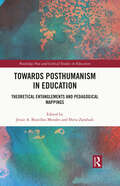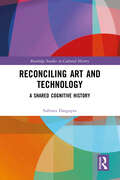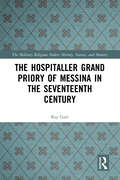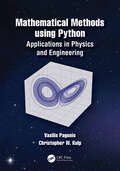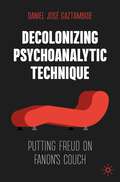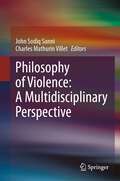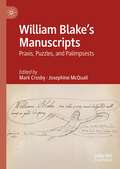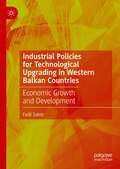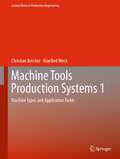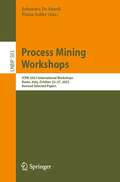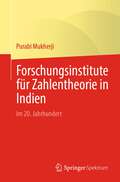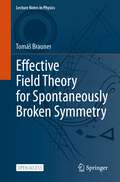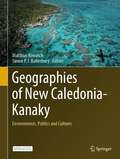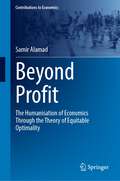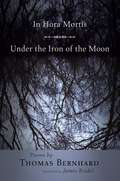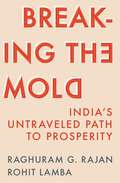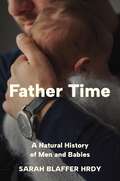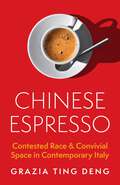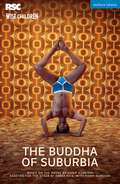- Table View
- List View
Towards Posthumanism in Education: Theoretical Entanglements and Pedagogical Mappings (Routledge New and Critical Studies in Education)
This edited volume presents a post-humanist reflection on education, mapping the complex transdisciplinary pedagogy and theoretical research while also addressing questions related to marginalised voices, colonial discourses, and the relationship between theory and practice.Exhibiting a re-imagination of education through themed relationalities that can transverse education, this cutting-edge book highlights the importance of matter in educational environments, enriching pedagogies, teacher-student relationships and curricular innovation. Chapters present contributions that explore education through various international contexts and educational sectors, unravelling educational implications with reference to the climate change crisis, migrant children in education, post-pandemic education, feminist activists and other emergent issues. The book examines the ongoing iterations of the entanglement of colonisation, modernity, and humanity with education to propose a possibility of education capable of upholding heterogeneous worlds.Curated with a global perspective on transversal relationalities and offering a unique outlook on posthuman thoughts and actions related to education, this book will be an important reading for students, researchers and academics in the fields of philosophy of education, sociology of education, posthumanism and new materialism, curriculum studies, and educational research.
Towards Posthumanism in Education: Theoretical Entanglements and Pedagogical Mappings (Routledge New and Critical Studies in Education)
by Jessie A. Bustillos Morales Shiva ZarabadiThis edited volume presents a post-humanist reflection on education, mapping the complex transdisciplinary pedagogy and theoretical research while also addressing questions related to marginalised voices, colonial discourses, and the relationship between theory and practice.Exhibiting a re-imagination of education through themed relationalities that can transverse education, this cutting-edge book highlights the importance of matter in educational environments, enriching pedagogies, teacher-student relationships and curricular innovation. Chapters present contributions that explore education through various international contexts and educational sectors, unravelling educational implications with reference to the climate change crisis, migrant children in education, post-pandemic education, feminist activists and other emergent issues. The book examines the ongoing iterations of the entanglement of colonisation, modernity, and humanity with education to propose a possibility of education capable of upholding heterogeneous worlds.Curated with a global perspective on transversal relationalities and offering a unique outlook on posthuman thoughts and actions related to education, this book will be an important reading for students, researchers and academics in the fields of philosophy of education, sociology of education, posthumanism and new materialism, curriculum studies, and educational research.
Reconciling Art and Technology: A Shared Cognitive History (Routledge Studies in Cultural History)
by Subrata DasguptaThis book examines two venerable cultures, art and technology, and uses the young "interdiscipline" of cognitive history combined with case studies of both ancient and modern artifacts to explore, and unveil, some of the bridges by which this reconciliation of two seemingly distant and oppositional cultures can be effected.Art and technology are commonly regarded as oppositional. While both are concerned with made things – artifacts – and both have their origins in pre-literate antiquity, the primary purposes they are intended for are quite distinct: the artifacts of technology serve utilitarian purposes while those of art serve affective needs. This opposition between art and technology, notably argued by such scholars as Lewis Mumford and George Kubler is challenged in this book. For, when we consider art and technology as creative phenomena, then many significant, interesting, and often subtle commonalities emerge whereby a reconciliation – a unity – of these two great cultures seems possible. This book utilizes case studies of both ancient and modern artifacts – ranging from the Nataraja sculpture of ancient India, a great astronomical clock of ancient China, and Japanese Samurai swordmaking, through Gothic cathedrals and Renaissance paintings of Europe to English Elizabethan machinery to the French Impressionists to modernist concrete structures and paintings in both East and West.This book will be of interest to students and professional scholars interested in the histories of art and technology, cultural history, and creativity studies.
Reconciling Art and Technology: A Shared Cognitive History (Routledge Studies in Cultural History)
by Subrata DasguptaThis book examines two venerable cultures, art and technology, and uses the young "interdiscipline" of cognitive history combined with case studies of both ancient and modern artifacts to explore, and unveil, some of the bridges by which this reconciliation of two seemingly distant and oppositional cultures can be effected.Art and technology are commonly regarded as oppositional. While both are concerned with made things – artifacts – and both have their origins in pre-literate antiquity, the primary purposes they are intended for are quite distinct: the artifacts of technology serve utilitarian purposes while those of art serve affective needs. This opposition between art and technology, notably argued by such scholars as Lewis Mumford and George Kubler is challenged in this book. For, when we consider art and technology as creative phenomena, then many significant, interesting, and often subtle commonalities emerge whereby a reconciliation – a unity – of these two great cultures seems possible. This book utilizes case studies of both ancient and modern artifacts – ranging from the Nataraja sculpture of ancient India, a great astronomical clock of ancient China, and Japanese Samurai swordmaking, through Gothic cathedrals and Renaissance paintings of Europe to English Elizabethan machinery to the French Impressionists to modernist concrete structures and paintings in both East and West.This book will be of interest to students and professional scholars interested in the histories of art and technology, cultural history, and creativity studies.
The Hospitaller Grand Priory of Messina in the Seventeenth Century (ISSN)
by Ray GattThis book details the origin of the Grand Hospitaller Priory of Messina. It discusses a breadth of themes, such as the historiography, the Hospitaller’s European commandery and Sicilian patrimony, its management and organization in the seventeenth century, its religious practices, and the prioral mansion in Messina. The final chapter includes a detailed account of the 1674 Messina insurrection against the Spanish overlords. This event plunged the priory into political chaos, fracturing it and pitting members against each other. It also shattered neutrality issues embedded in the statutes of the religion and ignoring the precepts emanating from the Convent on Malta.The Hospitaller Grand Priory of Messina in the Seventeenth Century will appeal to students and scholars alike interested in the Crusading Orders, the history of the Knights Hospitaller, and the history of Malta.
Mathematical Methods using Python: Applications in Physics and Engineering
by Vasilis Pagonis Christopher Wayne KulpThis advanced undergraduate textbook presents a new approach to teaching mathematical methods for scientists and engineers. It provides a practical, pedagogical introduction to utilizing Python in Mathematical and Computational Methods courses. Both analytical and computational examples are integrated from its start. Each chapter concludes with a set of problems designed to help students hone their skills in mathematical techniques, computer programming, and numerical analysis. The book places less emphasis on mathematical proofs, and more emphasis on how to use computers for both symbolic and numerical calculations. It contains 182 extensively documented coding examples, based on topics that students will encounter in their advanced courses in Mechanics, Electronics, Optics, Electromagnetism, Quantum Mechanics etc.An introductory chapter gives students a crash course in Python programming and the most often used libraries (SymPy, NumPy, SciPy, Matplotlib). This is followed by chapters dedicated to differentiation, integration, vectors and multiple integration techniques. The next group of chapters covers complex numbers, matrices, vector analysis and vector spaces. Extensive chapters cover ordinary and partial differential equations, followed by chapters on nonlinear systems and on the analysis of experimental data using linear and nonlinear regression techniques, Fourier transforms, binomial and Gaussian distributions. The book is accompanied by a dedicated GitHub website, which contains all codes from the book in the form of ready to run Jupyter notebooks. A detailed solutions manual is also available for instructors using the textbook in their courses.Key Features:· A unique teaching approach which merges mathematical methods and the Python programming skills which physicists and engineering students need in their courses.· Uses examples and models from physical and engineering systems, to motivate the mathematics being taught.· Students learn to solve scientific problems in three different ways: traditional pen-and-paper methods, using scientific numerical techniques with NumPy and SciPy, and using Symbolic Python (SymPy).Vasilis Pagonis is Professor of Physics Emeritus at McDaniel College, Maryland, USA. His research area is applications of thermally and optically stimulated luminescence. He taught courses in mathematical physics, classical and quantum mechanics, analog and digital electronics and numerous general science courses. Dr. Pagonis’ resume lists more than 200 peer-reviewed publications in international journals. He is currently associate editor of the journal Radiation Measurements. He is co-author with Christopher Kulp of the undergraduate textbook “Classical Mechanics: a computational approach, with examples in Python and Mathematica” (CRC Press, 2020). He has also co-authored four graduate-level textbooks in the field of luminescence dosimetry, and most recently published the book “Luminescence Signal analysis using Python” (Springer, 2022).Christopher Kulp is the John P. Graham Teaching Professor of Physics at Lycoming College. He has been teaching undergraduate physics at all levels for 20 years. Dr. Kulp’s research focuses on modelling complex systems, time series analysis, and machine learning. He has published 30 peer-reviewed papers in international journals, many of which include student co-authors. He is also co-author of the undergraduate textbook “Classical Mechanics: a computational approach, with examples in Python and Mathematica” (CRC Press, 2020).
Decolonizing Psychoanalytic Technique: Putting Freud on Fanon's Couch
by Daniel José GaztambideBoth new and seasoned psychotherapists wrestle with the relationship between psychological distress and inequality across race, class, gender, and sexuality. How does one address this organically in psychotherapy? What role does it play in therapeutic action? Who brings it up, the therapist or the patient? Daniel José Gaztambide addresses these questions by offering a rigorous decolonial approach that rethinks theory and technique from the ground up, providing an accessible, evidence-informed reintroduction to psychoanalytic practice. He re-examines foundational thinkers from three traditions—Freudian, relational-interpersonal, and Lacanian—through the lens of revolutionary psychiatrist Frantz Fanon, and offers a detailed analysis of Fanon’s psychoanalytic practice. Drawing on rich yet grounded discussions of theory and research, Gaztambide presents a clinical model that facilitates exploration of the social in the clinical space in a manner intimately related to the patient’s presenting problem. In doing so, this book demonstrates that clinicians no longer have to choose between attending to the personal, interpersonal, or sociopolitical. It is a guide to therapeutic action “on the couch,” which envisions political action “off the couch” and in the streets. Decolonizing Psychoanalytic Technique provides a comprehensive, practice-oriented and compelling guide for students, practitioners, and scholars of critical, multicultural and decolonial approaches to psychotherapy.
Philosophy of Violence: A Multidisciplinary Perspective
by John Sodiq Sanni Charles Mathurin VilletThis volume explores the role of violence generally but with specific reference to African concepts and themes, and the significance they have for social redress. The contributors interpret African concepts and themes to include accounts of violence, explicitly or implicitly construed from indigenous axiological resources like Ubuntu or personhood and from those works that are not African in origin but have become central in African moral, political and legal thought, such as Hannah Arendt’s On Violence and Walter Benjamin’s Critique of Violence. The volume contributes to moral philosophy, social philosophy, African philosophy, and political philosophy/theory. It situates itself within the Global South, specifically the African perspective, to explore, articulate, and defend (or even critique) African conceptions of violence. This volume also takes seriously the need to tap into the intellectual resource of the African and diasporic African episteme thruthinkers such as Steve Biko, Frantz Fanon and Reiland Rabaka. It appeals to students and researchers working in philosophy and related disciplines on violence in Africa and the postcolonial context.
William Blake's Manuscripts: Praxis, Puzzles, and Palimpsests
by Mark Crosby Josephine A. McQuailThis collection of essays examines how close analysis of William Blake’s manuscripts can yield new discoveries about his techniques, his working habits, and his influences. With the introduction of facsimile editions and more particularly, the William Blake Archive, the largest digital repository of Blake materials online, scholars have been able to access Blake’s work in as close its original medium, leading to important insights into Blake’s creative process and mythopoetic system. Recent advancements in digital editing and reproduction has further increased interest in Blake’s manuscripts. This volume brings together both established Blake scholars, including G.E. Bentley Jnr’s final essay on Blake, and upcoming scholars whose research is at the intersection of digital humanities, critical theory, textual scholarship, queer theory, transgender studies, reception history, and bibliographical studies. The chapters seek to cover the breadth of Blake’s manuscripts: poetry, letters, notebook entries, and annotations. Together, these chapters offer an overview of the current state of research in Blake studies on manuscripts at a point when his manuscripts have become increasingly available in digital environments, and gesture to a possible future of Blake scholarship in general.
Industrial Policies for Technological Upgrading in Western Balkan Countries: Economic Growth and Development
by Fadil SahitiThis book focuses on Albania, North Macedonia and Kosovo; it explores the industrial policies currently in place in these economies and compares their effects with the situation in Slovenia, which is used as a reference country. It provides a brief introduction to some new industrial policy approaches and proposes a new industrial policy framework that focuses on development of the national innovation system through technology upgrading and increased exploitation of technology to build the foundations for sustainable development. Finally, it provides an empirical analysis of the technological capabilities of the manufacturing firms operating in in Albania, North Macedonia and Kosovo.It delves into the technical-economic properties of these Western Balkans countries and identifies some strategic options for industrial policy. It emphasizes the need for a form of governance that emphasizes on industrial development and innovation capabilities, which are required for the implementation of these new industrial policies. The analysis draws on the current industrial policy literature and work on developing (catch-up) economies, technological upgrading and innovation studies, which represent current academic thinking in these fields.
Machine Tools Production Systems 1: Machine Types and Application Fields (Lecture Notes in Production Engineering)
by Christian Brecher Manfred WeckThe first part of the Machine Tools and Production Systems Compendium presents the wide range of machine tools and a comprehensive overview of different machine types. Based on the categorization of manufacturing processes according to the German standard DIN 8580, the different areas of application of machine tools are delineated and the various machine designs, the mechanical structure as well as the functions of the machine types are explained. Numerous three-dimensional illustrations of the principles, color photos, section drawings and schematic diagrams supplement the explanations and provide visual support. First, the machine types for the different manufacturing processes are described — before the multi-machine systems are explained. This is followed by a detailed presentation of the various equipment components of machine tools. In the last newly introduced chapter, the volume is concluded by a comprehensive and detailed explanation of three design examples of selected machine tools based on assembly drawings.The German Machine Tools and Production Systems Compendium has been completely revised. The previous five-volume series has been condensed into three volumes in the new ninth edition with colored technical illustrations throughout. This first English edition is a translation of the German ninth edition.
Process Mining Workshops: ICPM 2023 International Workshops, Rome, Italy, October 23–27, 2023, Revised Selected Papers (Lecture Notes in Business Information Processing #503)
by Johannes De Smedt Pnina SofferThis volume constitutes the revised selected papers of several workshops which were held in conjunction with the 5th International Conference on Process Mining, ICPM 2023, held in Rome, Italy, in October 23–27, 2023.The 38 revised full papers presented in this book were carefully reviewed and selected from 85 submissions. The book also contains one invited talk. ICPM 2023 presented the following six workshops:– 4th International Workshop on Event Data and Behavioral Analytics (EdbA)– 4th International Workshop on Leveraging Machine Learning in Process Mining (ML4PM)– 6th International Workshop on Process-Oriented Data Science for Healthcare (PODS4H)– 8th International Workshop on Process Querying, Manipulation, and Intelligence (PQMI)– 2nd International Workshop on Education Meets Process Mining (EduPM)– 2nd International Workshop on Collaboration Mining for Distributed Systems (COMINDS).
Forschungsinstitute für Zahlentheorie in Indien: Im 20. Jahrhundert
by Purabi MukherjiDieses Buch versucht, die schrittweise Entwicklung der wichtigsten Forschungsinstitute zur Zahlentheorie in Südindien, Punjab, Mumbai, Bengalen und Bihar zu beschreiben, einschließlich der Gründung des Tata Institute of Fundamental Research (TIFR) in Mumbai, einem bahnbrechenden Ereignis in der Geschichte der Zahlentheorie-Forschung in Indien. Die Forschung zur Zahlentheorie in Indien begann in der modernen Zeit mit dem Auftreten des ikonischen Genies Srinivasa Ramanujan, das Mathematiker auf der ganzen Welt inspirierte. Das Buch diskutiert die nationale und internationale Wirkung der Forschung indischer Zahlentheoretiker und enthält eine sorgfältig zusammengestellte, umfassende Bibliographie bedeutender indischer Zahlentheoretiker des 20. Jahrhunderts. Es ist wichtig für die historische Dokumentation und eine wertvolle Ressource für Forscher auf diesem Gebiet. Das Buch diskutiert auch kurz die Bedeutung der Zahlentheorie in der modernen Mathematik, einschließlich Anwendungen der Ergebnisse indigener Zahlentheoretiker in praktischen Bereichen. Da das Buch aus der Perspektive der Wissenschaftsgeschichte geschrieben ist, wurden technische Fachbegriffe und mathematische Ausdrücke so weit wie möglich vermieden.Die Übersetzung wurde mit Hilfe von künstlicher Intelligenz durchgeführt. Eine anschließende menschliche Überarbeitung erfolgte vor allem in Bezug auf den Inhalt.
Effective Field Theory for Spontaneously Broken Symmetry (Lecture Notes in Physics #1023)
by Tomáš BraunerThis open access book is about spontaneous symmetry breaking, which is a classic area of theoretical physics that lies at the core of many fascinating phenomena such as ferromagnetism, superfluidity, superconductivity, or the Higgs mechanism. The book brings an up-to-date overview of spontaneous symmetry breaking and of modern effective field theory description thereof. The topics covered include the classification of Nambu–Goldstone bosons, nonlinear realization of internal and spacetime symmetries and the construction of the corresponding effective actions, and selected applications. With in-depth exposition of conceptual foundations and numerous illustrative examples, the book is accessible to anybody having taken a basic course on quantum field theory. It serves as a self-contained text for graduate students and junior researchers in diverse areas of physics, but also as a useful reference for experts.
Geographies of New Caledonia-Kanaky: Environments, Politics and Cultures
by Matthias Kowasch Simon P. J. BatterburyThis open access book provides a unique overview of geographical, historical, political and environmental issues facing the French overseas territory New Caledonia, also called “Kanaky” by the indigenous Kanak people, who outnumber citizens of European and other origin. New Caledonia has seen a long and complex struggle for decolonization, but is still on the United Nations’ list of “Non-Self Governing territories” and there is little sign of change following three referendums on independence and extensive negotiations with France. The archipelago possesses around a quarter of the world’s nickel deposits, giving it additional strategic importance when demand for the mineral is strong. The islands have unique biodiversity, and Caledonian coastal lagoons have been listed as UNESCO world heritage sites since 2008. The book offers detailed insights into the environmental and human geographies of the archipelago, with a focus on the linksbetween environmental protection and extensive mining operations, between political independence struggles and continued wellbeing and economic development, and the differing visions for the future of the islands. This multidisciplinary volume, one of the few to appear in English, appeals to researchers, students and policy makers across the environmental, social and political sciences.
Beyond Profit: The Humanisation of Economics Through the Theory of Equitable Optimality (Contributions to Economics)
by Samir AlamadThis book advocates for a transformative shift in economics, emphasising the need to manage finite resources equitably while safeguarding universal well-being. It introduces the Equitable Optimality economic theory, departing from materialistic views and championing a theory deeply rooted in moral economy, values, and ethics. By integrating spirituality, social justice, and ethics into economic analysis, this model contends that economics can serve the welfare of all, offering a unique lens for economic theory and policy. It challenges prevailing materialistic economic paradigms by proposing an interest-balanced/free financial economy.This economic theory prioritises profit-sharing, societal objectives, and equitable resource allocation, aiming to create a more inclusive society. However, practical implementation and comprehensive research are crucial for understanding its impact and overcoming transitional challenges. The Equitable Optimality economic theory provides a valuable perspective within economics, focusing on ethical foundations, acknowledging non-monetary values, and humanising economic agents. It does not aim to replace conventional economic theories but offers an alternative framework to inspire innovative approaches to economic models and policymaking. Its broader policy perspective aims to foster a more prosperous and harmonious society by integrating ethical considerations, equity and justice into economic decision-making and emphasising societal welfare.
In Hora Mortis / Under the Iron of the Moon: Poems (The Lockert Library of Poetry in Translation #162)
by Thomas BernhardHaunting and darkly humorous poems by the internationally acclaimed Austrian novelist, playwright, and memoirist Thomas Bernhard (1931–1989) has been compared to Kafka and Beckett, and critics have ranked his novels among the masterpieces of the twentieth century. But in fact he began his career in the 1950s as a poet, publishing three books of well-received verse before turning to fiction. In Hora Mortis / Under the Iron of the Moon is the first book of his expressionist-like poetry to be published in English. Bringing together Bernhard's second and third books of poetry, the collection's short, untitled lyrics reveal his early explorations of themes that would continue to preoccupy him in his novels, plays, and other writings—especially his intense ambivalence toward the land and people of Austria and their then-recent Nazi past. As the translator James Reidel writes in his preface, "Bernhard found Austrian soil . . . to be like a hair shirt and a blanket. It is a killing ground but with a postcard setting." In poems that both subvert and pay homage to such influences as Georg Trakl, Bernhard begins to develop his characteristic dark humor while exploring themes of nature, death, meaninglessness, and faith.
Breaking the Mold: India’s Untraveled Path to Prosperity
by Raghuram G. Rajan Rohit LambaThe new path for economic development that India must create The whole world has a stake in India&’s future, and that future hinges on whether India can develop its economy and deliver for its population—now the world&’s largest—while staying democratic. India&’s economy has overtaken the United Kingdom&’s to become the fifth-largest in the world, but it is still only one-fifth the size of China&’s, and India&’s economic growth is too slow to provide jobs for millions of its ambitious youth. Blocking India&’s current path are intense global competition in low-skilled manufacturing, increasing protectionism and automation, and the country&’s majoritarian streak in politics. In Breaking the Mold, Raghuram Rajan and Rohit Lamba show why and how India needs to blaze a new path if it&’s to succeed.India diverged long ago from the standard development model, the one followed by China—from agriculture to low-skilled manufacturing, then high-skilled manufacturing and, finally, services—by leapfrogging intermediate steps. India must not turn back now. Rajan and Lamba explain how India can accelerate growth by prioritizing human capital, expanding opportunities in high-skilled services, encouraging entrepreneurship, and strengthening rather than weakening its democratic traditions. It can chart a path based on ideas and creativity even at its early stage of development.Filled with vivid examples and written with incisive candor, Breaking the Mold shows how India can break free of the stumbling blocks of the past and embrace the enormous possibilities of the future.
Breaking the Mold: India’s Untraveled Path to Prosperity
by Raghuram G. Rajan Rohit LambaThe new path for economic development that India must create The whole world has a stake in India&’s future, and that future hinges on whether India can develop its economy and deliver for its population—now the world&’s largest—while staying democratic. India&’s economy has overtaken the United Kingdom&’s to become the fifth-largest in the world, but it is still only one-fifth the size of China&’s, and India&’s economic growth is too slow to provide jobs for millions of its ambitious youth. Blocking India&’s current path are intense global competition in low-skilled manufacturing, increasing protectionism and automation, and the country&’s majoritarian streak in politics. In Breaking the Mold, Raghuram Rajan and Rohit Lamba show why and how India needs to blaze a new path if it&’s to succeed.India diverged long ago from the standard development model, the one followed by China—from agriculture to low-skilled manufacturing, then high-skilled manufacturing and, finally, services—by leapfrogging intermediate steps. India must not turn back now. Rajan and Lamba explain how India can accelerate growth by prioritizing human capital, expanding opportunities in high-skilled services, encouraging entrepreneurship, and strengthening rather than weakening its democratic traditions. It can chart a path based on ideas and creativity even at its early stage of development.Filled with vivid examples and written with incisive candor, Breaking the Mold shows how India can break free of the stumbling blocks of the past and embrace the enormous possibilities of the future.
Father Time: A Natural History of Men and Babies
by Sarah Blaffer HrdyA sweeping account of male nurturing, explaining how and why men are biologically transformed when they care for babies It has long seemed self-evident that women care for babies and men do other things. Hasn&’t it always been so? When evolutionary science came along, it rubber-stamped this venerable division of labor: mammalian males evolved to compete for status and mates, while females were purpose-built to gestate, suckle, and otherwise nurture the victors&’ offspring. But come the twenty-first century, increasing numbers of men are tending babies, sometimes right from birth. How can this be happening? Puzzled and dazzled by the tender expertise of new fathers around the world—several in her own family—celebrated evolutionary anthropologist and primatologist Sarah Blaffer Hrdy set out to trace the deep history of male nurturing and explain a surprising departure from everything she had assumed to be &“normal.&”In Father Time, Hrdy draws on a wealth of research to argue that this ongoing transformation in men is not only cultural, but profoundly biological. Men in prolonged intimate contact with babies exhibit responses nearly identical to those in the bodies and brains of mothers. They develop caring potential few realized men possessed. In her quest to explain how men came to nurture babies, Hrdy travels back through millions of years of human, primate, and mammalian evolution, then back further still to the earliest vertebrates—all while taking into account recent economic and social trends and technological innovations and incorporating new findings from neuroscience, genetics, endocrinology, and more. The result is a masterful synthesis of evolutionary and historical perspectives that expands our understanding of what it means to be a man—and what the implications might be for society and our species.
Father Time: A Natural History of Men and Babies
by Sarah Blaffer HrdyA sweeping account of male nurturing, explaining how and why men are biologically transformed when they care for babies It has long seemed self-evident that women care for babies and men do other things. Hasn&’t it always been so? When evolutionary science came along, it rubber-stamped this venerable division of labor: mammalian males evolved to compete for status and mates, while females were purpose-built to gestate, suckle, and otherwise nurture the victors&’ offspring. But come the twenty-first century, increasing numbers of men are tending babies, sometimes right from birth. How can this be happening? Puzzled and dazzled by the tender expertise of new fathers around the world—several in her own family—celebrated evolutionary anthropologist and primatologist Sarah Blaffer Hrdy set out to trace the deep history of male nurturing and explain a surprising departure from everything she had assumed to be &“normal.&”In Father Time, Hrdy draws on a wealth of research to argue that this ongoing transformation in men is not only cultural, but profoundly biological. Men in prolonged intimate contact with babies exhibit responses nearly identical to those in the bodies and brains of mothers. They develop caring potential few realized men possessed. In her quest to explain how men came to nurture babies, Hrdy travels back through millions of years of human, primate, and mammalian evolution, then back further still to the earliest vertebrates—all while taking into account recent economic and social trends and technological innovations and incorporating new findings from neuroscience, genetics, endocrinology, and more. The result is a masterful synthesis of evolutionary and historical perspectives that expands our understanding of what it means to be a man—and what the implications might be for society and our species.
Chinese Espresso: Contested Race and Convivial Space in Contemporary Italy
by Grazia Ting DengWhy and how local coffee bars in Italy—those distinctively Italian social and cultural spaces—have been increasingly managed by Chinese baristas since the Great Recession of 2008Italians regard espresso as a quintessentially Italian cultural product—so much so that Italy has applied to add Italian espresso to UNESCO&’s official list of intangible heritages of humanity. The coffee bar is a cornerstone of Italian urban life, with city residents sipping espresso at more than 100,000 of these local businesses throughout the country. And yet, despite its nationalist bona fides, espresso in Italy is increasingly prepared by Chinese baristas in Chinese-managed coffee bars. In this book, Grazia Ting Deng explores the paradox of &“Chinese espresso&”—the fact that this most distinctive Italian social and cultural tradition is being preserved by Chinese immigrants and their racially diverse clientele.Deng investigates the conditions, mechanisms, and implications of the rapid spread of Chinese-owned coffee bars in Italy since the Great Recession of 2008. Drawing on her extensive ethnographic research in Bologna, Deng describes an immigrant group that relies on reciprocal and flexible family labor to make coffee, deploying local knowledge gleaned from longtime residents who have come, sometimes resentfully, to regard this arrangement as a new normal. The existence of Chinese espresso represents new features of postmodern and postcolonial urban life in a pluralistic society where immigrants assume traditional roles even as they are regarded as racial others. The story of Chinese baristas and their patrons, Deng argues, transcends the dominant Eurocentric narrative of immigrant-host relations, complicating our understanding of cultural dynamics and racial formation within the shifting demographic realities of the Global North.
Chinese Espresso: Contested Race and Convivial Space in Contemporary Italy
by Grazia Ting DengWhy and how local coffee bars in Italy—those distinctively Italian social and cultural spaces—have been increasingly managed by Chinese baristas since the Great Recession of 2008Italians regard espresso as a quintessentially Italian cultural product—so much so that Italy has applied to add Italian espresso to UNESCO&’s official list of intangible heritages of humanity. The coffee bar is a cornerstone of Italian urban life, with city residents sipping espresso at more than 100,000 of these local businesses throughout the country. And yet, despite its nationalist bona fides, espresso in Italy is increasingly prepared by Chinese baristas in Chinese-managed coffee bars. In this book, Grazia Ting Deng explores the paradox of &“Chinese espresso&”—the fact that this most distinctive Italian social and cultural tradition is being preserved by Chinese immigrants and their racially diverse clientele.Deng investigates the conditions, mechanisms, and implications of the rapid spread of Chinese-owned coffee bars in Italy since the Great Recession of 2008. Drawing on her extensive ethnographic research in Bologna, Deng describes an immigrant group that relies on reciprocal and flexible family labor to make coffee, deploying local knowledge gleaned from longtime residents who have come, sometimes resentfully, to regard this arrangement as a new normal. The existence of Chinese espresso represents new features of postmodern and postcolonial urban life in a pluralistic society where immigrants assume traditional roles even as they are regarded as racial others. The story of Chinese baristas and their patrons, Deng argues, transcends the dominant Eurocentric narrative of immigrant-host relations, complicating our understanding of cultural dynamics and racial formation within the shifting demographic realities of the Global North.
The Buddha of Suburbia (Modern Plays)
by Emma Rice Hanif KureishiMy name is Karim Amir, and I am an Englishman born and bred. Almost.South London in the late seventies. High unemployment, high inflation, food shortages and strikes. But despite the winter of discontent, 17-year-old Karim's life is about to explode into glorious technicolour as he navigates a path to enlightenment. Or at the very least, Beckenham.Emma Rice adapts the award-winning 1990 novel, which was later turned into an acclaimed TV series, with Hanif Kureishi. On stage it becomes an irresistible, heart-breaking and joyful exploration of family, friends, sex, theatre and, ultimately, belonging.This edition was published to coincide with the world premiere at the RSC in April 2024.
The Buddha of Suburbia (Modern Plays)
by Emma Rice Hanif KureishiMy name is Karim Amir, and I am an Englishman born and bred. Almost.South London in the late seventies. High unemployment, high inflation, food shortages and strikes. But despite the winter of discontent, 17-year-old Karim's life is about to explode into glorious technicolour as he navigates a path to enlightenment. Or at the very least, Beckenham.Emma Rice adapts the award-winning 1990 novel, which was later turned into an acclaimed TV series, with Hanif Kureishi. On stage it becomes an irresistible, heart-breaking and joyful exploration of family, friends, sex, theatre and, ultimately, belonging.This edition was published to coincide with the world premiere at the RSC in April 2024.
